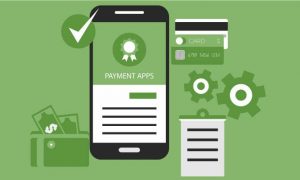Digital wallets have become increasingly popular over the years — Apple released a digital-first credit card, “just Venmo me” has become a common phrase and you can even ride the subway by simply holding your watch or phone up to the turnstile.
According to a recent report by Square, the coronavirus pandemic has led to a dramatic increase in digital payment adoption “all in the name of a safety-first approach to business” with the number of cashless businesses in the U.S. that utilize Square’s service going from 8 percent on March 1 to 31 percent on April 23.
Prior to the pandemic, the rate of adoption in the U.S. was much slower compared with other countries due to skepticism around security. In fact, Pew Research found that 53 percent of Americans thought of mobile payments as poorly protected in a 2018 study on mobile payment adoption.
But before we dive into security, let’s take a look at what digital wallets are and how they work.
What is a digital wallet?
Digital wallets are exactly what they sound like: a digital version of your financial accounts made easily accessible via computer, smartphone or smart device. This ultimately eliminates much of the need to carry around your actual wallet.
ApplePay, Google Pay, and Samsung Pay are probably three of the most popular digital wallets, but there are quite a few others. Some other popular digital wallets include PayPal and Venmo, both of which are uniquely social by allowing you to easily send money to retailers and friends.
How digital wallets work
To get started with a digital wallet, you’ll first want to decide which one you want to use. This decision will often be influenced by the device you use. For instance, if you’re an iPhone or Apple Watch user then you’ll probably lean towards ApplePay whereas Android users will lean towards Google Pay or Samsung Pay.
You can also choose to use one or multiple. I personally utilize ApplePay, Venmo and PayPal, but all for different reasons. I have one card hooked up to ApplePay just in case I ever forget my wallet. I use Venmo for splitting bills with friends and occasionally for sending money to retailers. And I use PayPal for a quick, easy and secure checkout from retailers that accept it.
If you want to utilize a digital wallet, you will have to enter all of your card information into the app or site of your choice. After you’ve completed that, your information will be encrypted and you will only be able to use the wallet when you unlock your device and authorize the use of it.
To make a mobile payment, you simply have to authorize the digital wallet and hold it close enough to the card reader so that your information can be transmitted. Not all retailers accept mobile payments, but you can easily look for the contactless payment indicator on the retailer’s point-of-sale (POS) system or card reader. This symbol looks like a sideways WiFi icon.
What else can digital wallets do?
Not only are digital wallets great for simplifying payments, they are also a great place to keep other important documents organized and easily accessible.
Here’s a look at all of the things you can store in a digital wallet:
- Credit or debit cards
- Boarding passes
- Hotel reservations
- Concert tickets
- Gift cards
- Coupons
- Loyalty rewards cards
Many individual apps also offer their own digital wallets. This is particularly popular for fast food chains that also offer loyalty programs. Starbucks, for example, incentivizes customers to use the app by rewarding them with “stars” that can be redeemed for free drinks and other rewards. However, in order to earn these stars, users have to pay within the app via digital wallet. You can upload Starbucks gift cards and once those run out, you can reload them with your debit or credit card.
Are digital wallets safe?
A common hesitation with digital wallets is the concern over safety and security. What happens if your phone gets stolen? Can hackers easily steal your information? Will you be putting your finances at risk?
To many users’ surprise, the answer is no — digital wallets are actually more secure than your physical cards.
That’s because mobile payments are heavily encrypted and tokenized, meaning that none of your actual card or account numbers are stored within the digital wallet.
But how does that work?
When you add your personal information into a digital wallet, that data is then converted into a unique code via encryption that can only be accessed by authorized entities. Digital wallets go a step further by also adding in tokenization, which takes that sensitive encrypted data and replaces it with a non-sensitive digital equivalent known as a token. These unique tokens are randomly generated every time a user makes a payment and only the merchant’s payment gateway can match this token to accept the payment.
Ultimately, your information is useless and unreadable to fraudsters when encryption and tokenization are used together.
Not only is your information more secure thanks to that technology, but also through user verification. This added layer of security is usually done by fingerprint, facial recognition or PIN.
Bottom line
Digital wallets offer consumers a convenient, efficient and secure method for virtual payments, tickets, gift cards and more. While it may not be time to ditch your physical wallet just yet, we will likely continue to see an increase in adoption by U.S. consumers and merchants in the age of coronavirus driven by higher demand for contactless experiences.
The post Digital wallets: A beginner’s guide to how they work appeared first on Bankrate and is written by Liz Hund
Original source: Bankrate






